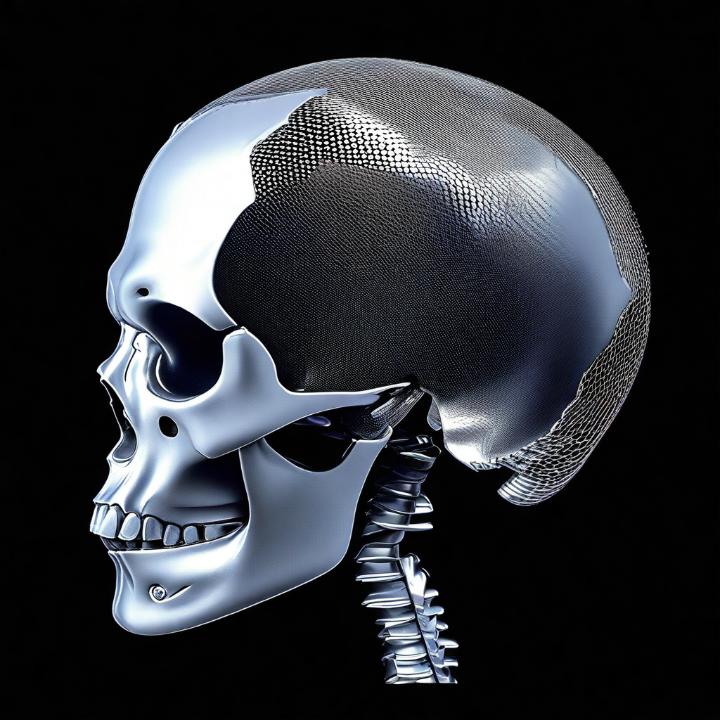How 3D Printing is Revolutionizing Healthcare: Expert Insights

Learn how 3D printing is reshaping healthcare, from custom implants to bioprinting breakthroughs, with insights from top industry experts.
Transforming Medicine with 3D Printing
3D printing in healthcare represents a seismic shift in how medical solutions are conceived and implemented. From creating patient-specific implants to printing functional tissues, this technology offers hope for addressing some of medicine’s most persistent challenges.
The demand for personalized healthcare and the need for cost-effective solutions have paved the way for 3D printing to flourish. Industry experts emphasize its potential to disrupt traditional methods and drive innovation in areas such as prosthetics, surgical planning, and even organ transplantation.
This article explores the advancements, applications, and future potential of 3D printing in healthcare, enriched with insights from leading voices in the field.
The Evolution of 3D Printing in Medicine
Early Beginnings
3D printing, initially developed for industrial prototyping, found its first healthcare application in dental prosthetics and anatomical models. The precision and speed of this technology soon caught the attention of surgeons, researchers, and medical device manufacturers.
The Turning Point
By the late 2010s, significant milestones were achieved:
- FDA approvals for 3D-printed implants like titanium cranial plates.
- The first printed tissues for drug testing.
- Large-scale production of customized orthopedic devices.
Current State in 2024
The healthcare 3D printing market now spans personalized implants, bioprinting, AI-driven designs, and decentralized manufacturing, transforming patient care on multiple fronts.
Emerging Technologies in 3D Printing and Healthcare
The rapid evolution of technology has broadened the scope of what 3D printing can achieve in the medical field. Here are key advancements shaping its future:
Nanotechnology in 3D Printing
The integration of nanotechnology into 3D printing processes allows for the creation of more sophisticated bioinks. Nanoparticles can enhance cell adhesion and tissue functionality, making bioprinted tissues closer to natural human tissues.
Case in Point:
- Research on nanomaterials is yielding stronger and more biocompatible scaffolds for tissue engineering.
- For instance, nanoparticle-infused bioinks are being developed for applications in regenerating complex structures like corneas.
Robotics Integration
Robotics has become a crucial part of precision in 3D printing for healthcare. Robotic arms equipped with multi-material printing capabilities ensure uniformity and detail in creating tiny, intricate structures.
Applications:
- Printing micro-sized implants for delicate surgeries.
- Enhancing the accuracy of prosthetics for pediatric and geriatric patients.
Blockchain for Supply Chain Integrity
The use of blockchain in 3D printing processes ensures that every medical device’s origin, materials, and design can be traced. This transparency is essential for ensuring regulatory compliance and patient safety.
Key Benefits:
- Reducing counterfeit products in healthcare.
- Enhancing trust in decentralized manufacturing hubs.
In-Depth: Regulatory Landscape for 3D-Printed Healthcare Devices
Challenges of Existing Frameworks
The regulatory framework for medical devices often assumes mass production with uniformity. However, 3D printing’s ability to create custom devices disrupts these assumptions, presenting unique challenges.
Examples of Challenges:
- How to certify devices that are unique to each patient.
- Ensuring that on-demand printed devices maintain quality consistency.
Global Harmonization of Standards
Efforts are being made to create standardized guidelines for 3D printing in healthcare. Organizations like the FDA and ISO are developing frameworks to address customization, material variability, and production environments.
Current Progress:
- The FDA has issued draft guidance for additive manufacturing of medical devices.
- ISO is working on standardizing material and process validation for 3D-printed implants.
Expert Insight:
“Harmonization is not just about technical standards; it’s about ensuring equitable access to safe innovations globally,” says Dr. Arjun Patel, a regulatory affairs expert.
Local vs. Centralized Manufacturing Regulation
One key debate in 3D printing regulation is whether localized or centralized production hubs are more effective in maintaining quality and accessibility.
Key Takeaways:
- Centralized hubs may ensure better oversight but could lead to higher costs.
- Localized production offers speed and accessibility but requires stringent on-site quality control.
Custom Medical Implants and Devices
Orthopedic Implants: Precision at Its Best
Orthopedic procedures, such as knee and hip replacements, have seen a significant improvement in success rates due to patient-specific implants. These devices reduce surgery time and enhance recovery.
Expert Insight:
“The adaptability of 3D printing ensures that every implant matches the patient’s anatomy, reducing complications,” says Dr. Michael Zhang, an orthopedic surgeon specializing in 3D-printed prosthetics.
Affordable Prosthetics for All
Organizations like e-NABLE have revolutionized prosthetics by making them affordable and customizable. Using 3D printers, volunteers produce prosthetics tailored to children and underserved populations.
Case Study:
Maria, a 12-year-old born without a hand, received a colorful, functional prosthetic through e-NABLE. Her mother shares, “It was life-changing for our family. The prosthetic cost less than $50 and was ready in days.”
Bioprinting: The Frontier of Healthcare Innovation
What is Bioprinting?
Bioprinting uses living cells, bioinks, and scaffolding materials to recreate human tissues. It holds the promise of addressing organ shortages and revolutionizing drug development.
Breakthroughs in Bioprinting
- Functional Skin Printing: Used for burn victims, bioprinted skin reduces scarring and speeds up healing.
- Drug Testing Models: Bioprinted tissues mimic human responses, providing more accurate data than animal testing.
- Cartilage Regeneration: Simple structures like ears and noses are already being produced for reconstructive surgeries.
Expert Insight:
“The greatest challenge in bioprinting is vascularization—ensuring blood vessels can support printed tissues. However, advancements in microfluidic technology are bringing us closer to this reality,” explains Dr. Sarah Lin, a pioneer in bio-inactive medicine.
AI and 3D Printing: A Powerful Synergy
Artificial intelligence amplifies the capabilities of 3D printing by optimizing design processes and ensuring quality control.
Key Applications
- Custom Design Algorithms: AI tools analyze patient imaging to create highly precise designs.
- Predicbioprintedenance: AI monitors printer performance, minimizing downtime.
- Error Reduction: Machine learning algorithms detect defects early, ensuring that all medical devices meet stringent safety standards.
Expert Perspective:
“AI isn’t just a complementary tool—it’s integral to scaling 3D printing in healthcare,” says tech innovator Dr. Emily Chen.
3D Printing in Surgical Planning and Education
Surgical Planning Tools
Pre-surgery, 3D-printed models allow surgeons to visualize complex anatomy, improving accuracy and reducing operating times.
Case Study:
A neurosurgical team in Germany successfully removed a brain tumor after rehearsing the procedure on a 3D-printed model derived from the patient’s MRI.
Revolutionizing Medical Training
Medical students use 3D-printed organs to practice procedures, especially for rare conditions. Unlike cadavers, these models offer consistent, customizable simulations.
The Future of 3D Printing in Healthcare
Decentralized Manufacturing
Hospitals and clinics could house 3D printers to produce devices on demand, reducing dependency on external suppliers.
Sustainable Practices
3D printing’s ability to minimize material waste aligns with the healthcare industry’s sustainability goals.
Expert Insight:
“The next step is integrating renewable materials into 3D printing for a greener future,” says Dr. Ravi Kapoor, a material scientist.
Real-World Applications and Challenges
Emergency and Humanitarian Responses
3D printing has become a critical tool in emergency medicine, especially in disaster zones and underserved regions. Portable 3D printers allow medical professionals to produce essential supplies, such as prosthetics and surgical instruments, on-site.
Case Study: Refugee Healthcare Innovations In 2023, 3D printing technology was deployed in Syrian refugee camps to create prosthetics for children affected by conflict. Localized production reduced delivery times and gave individuals access to life-changing devices. Organizations like Médecins Sans Frontières (MSF) are exploring similar setups globally.
Expert Insight: “Access to care should not depend on geography. 3D printing bridges that gap,” states Dr. Halima Rajan, a specialist in humanitarian technology.
Real-World Case Studies
Case Study 1: Bioprinted Skin for Burn Victims
A collaboration between hospitals and bioprinting firms resulted in the creation of functional skin grafts tailored to burn victims.
Impact:
- Reduced healing times by 40%.
- Bioprinted grafts minimize scarring compared to traditional skin grafts.
Case Study 2: Custom Surgical Guidelines
A hospital in Canada used 3D-printed surgical guides to perform a rare jaw reconstruction surgery.
Result:
The patient’s recovery time was halved, and the precision of the surgery ensured optimal functional and cosmetic outcomes.
Expert Insight:
“Without 3D printing, this surgery would have involved trial-and-error approaches, significantly increasing patient risk,” says Dr. Emilia Roth, a maxillofacial surgeon.
Addressing Challenges in Implementation
Although the promise of 3D printing in healthcare is enormous, it is not without challenges.
- Regulatory Hurdles Medical devices must meet stringent safety standards. Countries are working on adapting regulations to accommodate the unique aspects of 3D-printed devices. Expert Insight: “Regulatory pathways are improving, but global harmonization is needed to ensure equitable access,” explains Dr. Andrew Parker, a healthcare policy advisor.
- Material Constraints The availability of biocompatible and bioresorbable materials remains limited, which impacts applications like bioprinting.
- Cost and Accessibility While 3D printing reduces costs for specific applications, the upfront expense of equipment and skilled operators can be prohibitive for smaller healthcare providers.
Additional Expert Insights
To provide diverse perspectives, additional insights from industry professionals are included:
- Dr. Olivia Wexler, Bioprinting Researcher:
“Scalable organ printing is a few decades away, but strides in vascularized tissue models are a game changer for pharmaceutical development.” - Dr. Hakeem Olufemi, Public Health Advocate:
“Community-level adoption of 3D printing will democratize healthcare. Training programs are essential for empowering local technicians.” - Anna Simmons, 3D Printing Engineer:
“The next wave will involve sustainable materials, especially in resource-limited settings. Imagine biodegradable implants customized for the patient.”
Bridging Innovation and Care
As 3D printing evolves, its transformative power continues to expand. The fusion of engineering, medicine, and artificial intelligence is not just reshaping tools and treatments but also how care is conceptualized and delivered.
Healthcare leaders, policymakers, and innovators must collaborate to address the challenges of cost, accessibility, and regulation to maximize its benefits. The vision of a world where life-saving medical solutions are accessible to all is now more tangible than ever, thanks to 3D printing.
FAQ Section: Common Questions About 3D Printing in Healthcare
1. How does 3D printing benefit patients directly?
Patients benefit from personalized care, reduced surgical risks, faster recovery times, and more affordable medical devices.
2. Is bioprinting organs a reality today?
While bioprinting functional organs is still in development, simpler tissues like skin and cartilage are already in use.
3. How affordable is 3D printing for healthcare applications?
Costs vary, but 3D printing often reduces expenses by eliminating molds, minimizing waste, and accelerating production.
4. What are the main limitations of 3D printing in medicine?
Challenges include material constraints, regulatory hurdles, and the complexity of bioprinting functional organs.
5. How secure is patient data in 3D printing workflows?
Data security is a priority, with strict protocols ensuring that imaging and patient-specific designs are protected.
6. What role does 3D printing play in global health?
3D printing enhances global health by enabling localized production of medical devices and reducing reliance on international supply chains. This is especially crucial in low-resource settings.
7. Can 3D printers produce all types of medical devices?
While 3D printers can create a wide range of devices, their suitability depends on the complexity and regulatory requirements of the device. For instance, basic tools like surgical guides are more accessible to print than advanced devices like cardiac stents.
8. How sustainable is 3D printing in healthcare?
3D printing reduces material waste and can utilize recyclable materials. However, energy usage and material sourcing must be optimized to enhance sustainability further.
9. What are the ethical considerations of bioprinting?
Bioprinting raises questions about organ ownership, equitable access, and the long-term impact of synthetic tissues on health systems.
10. How soon will we see fully functional 3D-printed organs?
Experts estimate that printing fully functional organs with complex vascular systems will take another 20–30 years, but simpler tissues are already in use for testing and transplants.
11. Can 3D printing create medical devices on-site in hospitals?
Yes, many hospitals are adopting point-of-care 3D printing setups, enabling them to produce surgical models, guides, and even custom implants in-house.
12. What are the environmental impacts of 3D printing in healthcare?
While 3D printing minimizes material waste compared to traditional methods, energy consumption and reliance on non-renewable materials remain concerns.
13. How does 3D printing address healthcare disparities?
Localized 3D printing reduces costs and makes essential devices like prosthetics and surgical tools accessible in low-resource settings.
14. What training is required for healthcare professionals to use 3D printing?
Surgeons, engineers, and technicians require specialized training to use and maintain 3D printers, as well as to understand biocompatible materials and software design.
15. How does 3D printing improve patient outcomes?
By creating personalized devices, reducing surgery times, and enhancing precision, 3D printing directly improves recovery times and reduces complications.
The Dawn of a New Era in Healthcare
3D printing has transitioned from a novel technology to a cornerstone of modern medicine. Its applications in custom implants, surgical planning, bioprinting, and more have opened doors to previously unimaginable possibilities.
As the technology matures, supported by advances in AI, material science, and bioprinting, the potential for 3D printing in healthcare remains limitless. For patients, providers, and innovators alike, this is just the beginning of a transformative journey.






